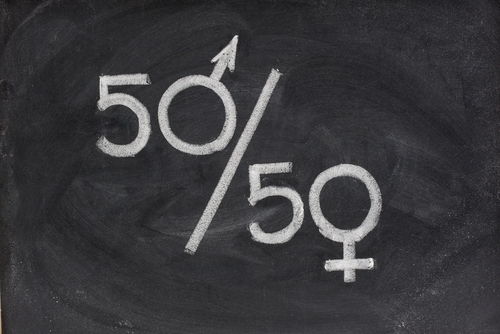
from Shutterstock.com
Quotas in politics may be defined as an affirmative measure which establishes a fixed percentage for the nomination or representation of a specific group. They are generally used to increase the participation of this group in decision-making positions and most often take the form of a “critical minimum”, such as 20, 30 or 40 per cent.
Quotas can be designed as either gender-specific or gender-neutral. Whereas quotas for women normally require a minimum number or percentage of women among candidates for a political office, gender-neutral quota systems set both a minimum and maximum for both genders (typically no more than 60 per cent and no less than 40 per cent of positions for either gender). It is interesting to note that in some countries, gender-neutral quotas have actually led to men moving up on lists so that the quota could be fulfilled.
The term “parity” (“parité” in French) is often used in the context of gender quotas. French authors tend to distinguish parity reforms calling for 50% of candidacies reserved for women from quota reforms which require a certain minimum percentage. For some, parity is not only a practical measure, but also a general principle of democracy. However, in many European countries parity and quota measures are seen as complementary or even as equivalent.
There are several types of quota systems distinguished on the basis of various criteria.
If one takes into account where the quota system is mandated, then quotas may be either statutory or voluntary. Statutory candidate quotas are included in the constitution (e.g. in Burkina Faso, Nepal, the Philippines and Uganda) or in electoral law (in many parts of Latin America, and in Belgium, France, Slovenia and Bosnia-Herzegovina), and they relate to the gender composition of the electoral lists of all political parties. Voluntary party quotas are adopted by political parties and take the form of internal party requirements to nominate at least a minimum number or percentage of women. In general, statutory quotas are considered more effective than voluntary party quotas. However, some countries including Denmark, Sweden, Finland and the Netherlands, have achieved high levels of women in parliament without the use of statutory quotas.
If the stage of the selection process at which the quota is applied is the criterion of division, there are three types of quotas depending on whether they aim to change the gender composition of the pool of aspirants (potential candidates), candidates or those elected.
The first kind of quota – often dubbed “aspirant” or “primary” quotas – have been used in countries with plurality (single winner) electoral systems. So-called “all-women shortlists” – a controversial model introduced by the British Labour Party –may serve as an example.
In the second case a typical quota rule is that a certain minimum percentage of female candidates must be placed on lists of candidates for public election by political parties. This type of quota is primarily used in countries with proportional electoral systems.
In the third case, quotas take the form of seats reserved for one gender. Reserved seats can be found mainly in Asia, the Middle East, and in post-conflict African countries (e.g. Rwanda and Uganda). The electoral systems of EU Member States do not provide for reserved seats; voluntary party quotas at candidate level are the most commonly used quota type within the EU.
Quotas are a highly controversial measure and their use has been the subject of heated debate in most cases where attempts have been made to introduce them. All in all, an increasing number of countries are using quotas, and nowadays around half the countries in the world use some type of quota for parliamentary elections.
Sources
Electoral Gender Quota Systems and their implementation in Europe / DG IPOL, September 2011;
QuotaProject : Global Database of Quotas for Women / International IDEA and Stockholm University.








[…] were also pleased to present a short overview on women in parliaments and governments, and quotas in politics. The three summaries published yesterday are a mine of interesting information, such as that 37 […]
[…] Quotas in politics / Library Summaries Piotr Bakowski, October 2012 Quotas in politics may be defined as an affirmative measure which establishes a fixed percentage for the nomination or representation of a specific group. They are generally used to increase the participation of this group in decision-making positions and most often take the form of a “critical minimum”, such as 20, 30 or 40 per cent […]